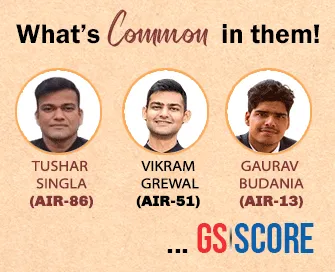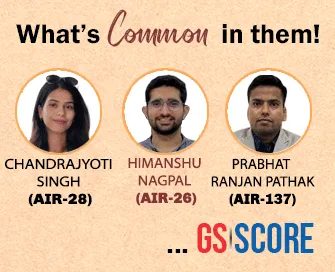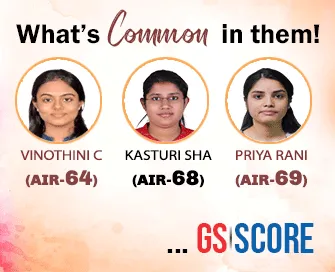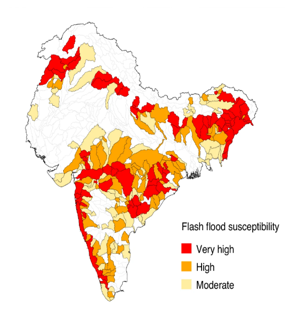

30th July 2025 (13 Topics)
Mains Issues
Context
The International Court of Justice (ICJ) delivered its advisory opinion on July 23, 2025, concerning the obligations of states to reduce greenhouse gas emissions and the legal implications of failing to meet those obligations.
International Climate Justice and Obligations under Multilateral Environmental Agreements
- Significance of the ICJ Advisory Opinion
-
- Upholding the Multilateral Climate Regime
- The ICJ reaffirmed the continued relevance of the UNFCCC, Kyoto Protocol, and Paris Agreement.
- It explicitly rejected the global North’s view that the Paris Agreement alone constitutes the binding framework.
- Acknowledged the Annex I and II distinctions under UNFCCC, reaffirming differentiated obligations for developed countries.
- Support for the Global South
- Reaffirmation of Common But Differentiated Responsibilities (CBDR-RC)
- Declared CBDR-RC as the core guiding principle in interpreting international climate obligations.
- Para 152 notes its universal applicability, even beyond climate law (e.g., biodiversity).
- Recognition of Historical Responsibility
- Maintains that obligations stem from cumulative emissions, justifying enhanced duties for developed nations.
- Concerns Over Temperature Goal Interpretation
- Shift in Interpreting Paris Goals
- ICJ interprets the 5°C threshold as the binding target, despite Article 2.1 of the Paris Agreement allowing a range (well below 2°C).
- Court relied on COP decisions (e.g., COP26, COP28) to revise this threshold, which is not formally part of the treaty text.
- Critique of Methodology
- The Court selectively cites IPCC’s AR6 emission targets (e.g., 43% cut by 2030), ignoring issues of equity and carbon space needed by developing countries.
- On Legal Enforcement of Climate Obligations
- Nature of Obligations
- ICJ classifies most commitments as obligations of conduct, not obligations of result.
- For instance: Timely submission of NDCs is enforceable, while meeting targets remains discretionary.
- ICJ classifies most commitments as obligations of conduct, not obligations of result.
- Gaps in Enforcement Mechanisms
- The opinion does not establish strong enforcement pathways, depending instead on jurisdictional courts and context-specific legal battles.
- Shortcomings in Addressing Development Needs
- Inadequate Focus on Climate Justice
- The opinion sidelines key developmental imperatives of the Global South, such as:
- Access to carbon space
- Access to finance and technology for low-carbon development
- Ignores the right to development, as noted by dissenting judge Xue Hanqin.
- The opinion sidelines key developmental imperatives of the Global South, such as:
- Equity and CBDR as Interpretative, Not Prescriptive
- Equity is framed only as a guiding tool, not a legally enforceable principle, raising concern for developing nations relying on it for climate negotiations.
- Future Litigation and Implications
- Opens limited room for litigation by vulnerable states, especially Small Island Developing States (SIDS), for reparations.
- However, requires high thresholds of causation, attribution, and proof of harm.


Mains Issues
Context
The Ministry of Home Affairs has outlined comprehensive initiatives undertaken by the Government of India to curb terrorism, both internal and cross-border, through integrated security, legislative, and technological frameworks.
India’s Counter-Terrorism Framework: Legislative Strengthening, Surveillance Infrastructure & International Coordination
- Constitutional Position and Centre-State Division
- As per the Seventh Schedule of the Indian Constitution, ‘Police’ and ‘Public Order’ are State subjects (List-II, State List).
- However, the Union Government adopts a multi-dimensional strategy to counter terrorism that complements State efforts and addresses border and national security
- Measures for Strengthening Internal and Border Security
- Operational & Infrastructure Upgradation:
- Deployment of Central Armed Police Forces (CAPFs) in vulnerable regions.
- Strategic construction under Bharatmala and Border Roads Organisation (BRO): roads, tunnels, bridges.
- Enhanced day and night area domination through Integrated Check Posts (ICPs) and Border Out Posts (BOPs).
- Technology-Driven Surveillance:
- Implementation of Comprehensive Integrated Border Management System (CIBMS): sensors, radars, command-control systems.
- Use of Unmanned Aerial Vehicles (UAVs), drones, and satellite surveillance for real-time monitoring.
- Capacity Building & Intelligence Sharing:
- Specialized training for State Police, cyber agencies, and law enforcement units.
- Enhanced inter-agency cooperation via Multi Agency Centre (MAC) at Centre and State MACs.
- Preventive Measures Against Terrorism
- Proactive Counter-Terror Measures:
- Zero-tolerance approach against terrorism adopted.
- Dismantling of terror ecosystems through coordinated operations by CAPFs, Army, State Police.
- Investigations by National Investigation Agency (NIA) into terrorism financing and logistics.
- Legislative Framework Strengthening:
- Unlawful Activities (Prevention) Act, 1967 and NIA Act, 2008 are key legal instruments.
- UAPA enables freezing/seizing of assets and travel restrictions on designated terrorists.
- Use of Advanced Technologies:
- Artificial Intelligence (AI), Big Data Analytics, Facial Recognition, and cyber monitoring to identify threats and prevent radicalization online.
- Combating Terror Financing
- Institutional Mechanisms:
- Combating Financing of Terrorism (CFT) Cell in MHA for inter-agency coordination.
- Terror Funding and Fake Currency Cell (TFFC) in NIA for direct prosecution.
- FICN Coordination Centre (FCORD) monitors fake currency flow.
- Global Alignment:
- Sanctions under UNSCR 1267 & 1373 and Section 51A of UAPA to freeze assets and restrict travel of designated terrorists.
- Financial Surveillance:
- Monitoring of suspicious NGO activities, hawala channels, and transactions via Financial Intelligence Units.
- International Cooperation
- India has functional Joint Working Groups on Counter-Terrorism (JWG-CT) with 26 countries.
- Participates in 5 multilateral forums: ASEAN, BIMSTEC, BRICS, EU, QUAD.
- Engages in Stand-alone Dialogue with Tunisia.
Way Forward
- Unified National Counter-Terrorism Strategy: Develop a centralized framework integrating technological innovation, intelligence operations, and international cooperation.
- Strengthening Cyber Surveillance: Scale up investments in AI-driven threat detection systems and reinforce social media vigilance to counter digital radicalization.
- Legal Reforms: Ensure that anti-terror laws balance national security with civil liberties and are harmonized with evolving global standards.
- Grassroots Intelligence: Improve human intelligence (HUMINT) networks at the local police and panchayat levels in high-risk regions.


Prelims Articles
Context
A recent study by researchers at IIT Gandhinagar, published in Nature, analysed flash flood patterns in the Indian subcontinent, identifying highly vulnerable river basins and key driving factors.
Flash Flood Hotspots:
- Most flash floods occur in the Himalayan, Central Indian, and West Coast regions.
- The Brahmaputra, Narmada-Tapi, Mahanadi, Godavari, Ganga, Mahi, Krishna, and Indus river basins have been identified as either “extremely prone” or “highly susceptible” to flash flooding.
Increase in Flash Flood Events:
- Flash flood events in India increased from 132 in 2002 to 184 in 2020 (as per official figures).
- Notable increases observed especially in the Brahmaputra basin, followed by Ganga and Krishna basins since 1995.
Driving Factors:
- Only 25% of flash floods are triggered solely by extreme precipitation.
- Remaining 75% result from compound effects:
- High antecedent soil moisture,
- Prolonged heavy rainfall,
- Rapid rainfall event after wet soil saturation.
Role of Climate Change:
- Between 1981–2020, rise in extreme rainfall frequency due to warming trends.
- Every 1°C increase in temperature raises moisture-holding capacity by 7%, causing more intense precipitation
Geomorphological Factors:
- Steep slopes and high relief in Himalayan and Western Ghats sub-basins contribute to faster runoff and flood onset.
- In central India, flashiness is driven more by rainfall concentration.
Adaptation and Mitigation:
- Calls for basin-specific strategies based on rainfall intensity, soil type, slope, and geomorphology.
- Importance of resilient infrastructure, early warning systems, and region-specific adaptation planning


Prelims Articles
Context
The Government of India has operationalised the Namo Drone Didi scheme as a Central Sector Scheme to empower 15,000 Women SHGs through drone-based agri-services between 2023–24 and 2025–26.
Namo Drone Didi Scheme
- Scheme Classification: Namo Drone Didi is a Central Sector Scheme (100% funded by the Central Government).
- Objective: To promote drone-based precision agriculture, reduce input costs, improve crop yield, and enable SHGs to become rural drone service providers.
- Timeframe and Funding: Implemented over 2023–24 to 2025–26 with a financial outlay of ?1,261 crore.
- Subsidy Details: Central Financial Assistance (CFA) of 80% of the drone package cost, capped at ?8 lakh per SHG.
- Drone Allocation: A total of 15,000 drones to be distributed. 500 drones have been deployed in 2023–24, of which 1094 were distributed using Lead Fertilizer Companies’ internal resources.
- Training Component:
- Drone Pilot Training: 15 days for one SHG member.
- Drone Assistant Training: 5 days for another SHG member/family member.
- Operational Efficiency: Drones cover 1 acre in 7–8 minutes; battery life ranges from 5 to 20 minutes depending on manufacturer.
- Logistics Support via SMAM:
- Due to transport challenges (reported by 68% of drone didis), especially in southern India (78.82%), support is now available under the Sub-Mission on Agricultural Mechanization (SMAM).
- Financial assistance of 80% is provided for purchase of Multi-Utility Machines to carry drones.
- Empowerment Outcome: SHGs have diversified into agri-tech services, indicating a shift from traditional roles to advanced, tech-enabled entrepreneurship. The scheme contributes toward financial inclusion, gender empowerment, and agrarian innovation.


Prelims Articles
Context
The International Monetary Fund (IMF) has raised India’s GDP growth forecast for FY26 to 6.4%, citing easing global trade tensions and resilient economic activity.
Revised Growth Forecasts:
- IMF has upgraded India's GDP growth forecast for FY26 to 6.4%, up from 6.3% predicted earlier.
- India remains the fastest-growing major economy in the world in both 2025 and 2026.
- The global growth forecast is now 3% for 2025 and 1% for 2026, up from 2.8% and 3% respectively.
Comparison with Other Economies (2025–26 projections):
- China: 4.0%
- US: 1.9%
- Euro Area: 1.8%
- World: 3.0%


Prelims Articles
Context
India has been ranked among the world's most equal societies by the Gini Index with a score of 25.5, which contradicts prevailing socio-economic inequalities on the ground.
About the Gini Index:
- The Gini Index or Gini Coefficient is a statistical measure used to gauge income or wealth distribution within a population.
- A Gini score of 0 represents perfect equality, while a score of 100 denotes perfect inequality.
- India has been scored 5 in the recent ranking, suggesting moderately low inequality, placing it among the world's most equal nations.
Critique of the Gini Methodology:
- The Gini Index often relies on formal economic data, which excludes the informal sector, a major component of the Indian economy.
- Disparities in wealth, gender, education, and technology access are often underrepresented.
- In India, a significant portion of the population is outside the formal tax and data systems, skewing inequality assessments.
Forms of Inequality in India (Despite Gini Score):
- Wealth Inequality:
- The top 1% of the population commands over 6% of national income (2022–23), while a large section earns subsistence-level income.
- Gender Inequality:
- Female participation in the workforce stands at 9%.
- Only 7% of leadership roles and 7.5% of start-ups are held/led by women.
- Digital Inequality:
- Only 7% schools have functional computers; internet availability exists in just 53.9% of schools.
- Only 8% of households have access to broadband.
- A stark gender digital divide persists—only 25% of rural women have internet access versus 49% of men.
- Educational Inequality:
- Students lacking digital access are excluded from virtual education during school shutdowns due to pollution or other emergencies.
- This limits future job prospects and perpetuates intergenerational poverty.
New and Emerging Inequalities:
- Banking Inequality: Limited digital literacy and poor internet access restrict marginalized groups from participating in formal financial systems.
- Intersectional Inequality: Inequalities are often interlinked, e.g., a poor, rural, female student without internet access faces a triple burden—economic, gender, and digital discrimination.


Prelims Articles
Context
The Government has intensified implementation of the National Mission on Edible Oils – Oilseeds (NMEO-OS) to enhance domestic oilseed production and reduce import dependency.
National Mission on Edible Oils – Oilseeds (NMEO-OS):
Background & Rationale:
- India imports ~9 million tonnes of palm oil annually, worth approx. ?40,000 crore, comprising around 56% of total edible oil imports.
- The heavy import burden threatens food security, fiscal prudence, and self-reliance in agriculture.
Mission Objectives:
- Expand oil palm cultivation area from 3.5 lakh ha (2019-20) to 10 lakh ha by 2025-26, with 3.22 lakh ha in general states and 3.28 lakh ha in NE states.
- Increase Crude Palm Oil (CPO) production from 0.27 lakh tonnes (2019-20) to 2 lakh tonnes by 2025-26.
- Maintain per capita consumption of edible oils at 19 kg/person/annum till 2025-26.
Key Strategic Interventions:
- Seedling availability: Development of seed gardens and nurseries for oil palm.
- Productivity push: Adoption of drip irrigation, FFB productivity enhancement, and intercropping during the 4-year gestation period.
- Area substitution: Divert low-yielding cereal cultivation areas to oil palm cultivation.
- Mission-mode implementation with multi-stakeholder engagement: State Agriculture Departments, ICAR, SAUs, KVKs, DD Kisan, AIR, and oil palm processors.
Governance and Monitoring:
Centralized fund disbursement and monitoring to ensure timely benefit delivery and target achievement.

Prelims Articles
Context
Kaziranga Tiger Reserve in Assam has recorded the third-highest tiger density in India, as per the latest tiger status report released on Global Tiger Day, July 29, 2025.
Kaziranga Tiger Reserve (KTR):
- Located in Assam, it is a UNESCO World Heritage Site and a biosphere known primarily for its population of the one-horned rhinoceros.
- Recently, KTR has emerged as a significant tiger habitat as well.
Tiger Density & Numbers (2024):
- Tiger Density:65 tigers per 100 sq. km (3rd highest in India).
- Tiger Count: 148 tigers over an area of 1,307.49 sq. km.
- Comparative Figures:
- Bandipur (Karnataka): 19.83 tigers/100 sq. km
- Corbett (Uttarakhand): 19.56 tigers/100 sq. km


Prelims Articles
Context
Goa Shipyard Limited launched the sixth indigenously-designed Fast Patrol Vessel, ICGS ATAL, for the Indian Coast Guard.
ICGS ATAL
Indigenous Design & Build:
- ICGS ATAL is part of a series of eight Fast Patrol Vessels (FPVs), all designed in-house by Goa Shipyard Limited (GSL).
- GSL is a Defence Public Sector Undertaking (DPSU) under the Ministry of Defence.
- This reflects India’s push towards self-reliance in defence production under the Aatmanirbhar Bharat
Strategic Capabilities of FPVs:
- These FPVs are 52 metres in length, with an 8-metre beam and a displacement of 320 tonnes.
- The vessels are capable of high-speed coastal patrolling, island security, offshore asset protection, and maritime surveillance.
- Additional roles include anti-smuggling, anti-piracy, and search & rescue operations—critical for national maritime security.


Prelims Articles
Context
DRDO conducted two successful flight-tests of the Pralay missile on July 28 and 29, 2025, as part of User Evaluation Trials to validate its minimum and maximum range capabilities.
Pralay Missile:
- Type: Solid-propellant quasi-ballistic missile.
- Range: Estimated operational range of 150–500 km, extendable further with modifications.
- Accuracy: High precision enabled through advanced guidance, navigation, and control systems.
- Warhead Flexibility: Capable of carrying conventional warheads including fragmentation, penetration-cum-blast, and runway denial sub-munitions.
Developmental Agencies:
- Lead Agency: Research Centre Imarat (RCI), Hyderabad.
- Collaborators: DRDL, ASL, ARDE, HEMRL, DMRL, TBRL, R&DE(Engrs) and ITR.
- Industry Partners: Bharat Dynamics Limited (BDL) and Bharat Electronics Limited (BEL), along with several MSMEs.
Strategic Significance:
- Reinforces India’s indigenous missile manufacturing capability under ‘Aatmanirbhar Bharat’.
- Contributes towards precision strike capability essential in short-duration, high-intensity conflicts.


Editorials
Context
In response to a PIL filed by Just Rights for Children (JRC), the Patna High Court has acknowledged the trafficking and exploitation of girls in orchestras across Bihar as a “serious issue” and directed the state to take urgent action.
Nature and Scale of the Crisis
- Trafficking into Orchestras – A Pervasive Pattern: Hundreds of minor girls, often under 14, have been rescued from orchestra troupes in Bihar, particularly from Saran, Gopalganj, and Muzaffarpur districts. These girls were promised jobs or training but subjected to sexual violence and inhuman living conditions.
- Bihar’s Geography and Socio-Economic Triggers: Bihar’s porous border with Nepal and railway linkages with trafficking-prone states like Chhattisgarh, Jharkhand, and Odisha make it a strategic hub for trafficking, worsened by poverty, illiteracy, and lack of institutional surveillance.
- Cultural Exploitation and Commodification: In states like West Bengal, music and dance are used as cultural aspirations to lure girls. In Bihar, they are sold for as little as ?10,000 and forced to perform in degrading conditions under threats and abuse.
Institutional and Legal Shortcomings
- Legal Framework Versus Implementation Gap: India has robust laws like the POCSO Act, Immoral Traffic (Prevention) Act, and Juvenile Justice Act. Yet, weak enforcement, poor conviction rates, and misclassification of crimes (e.g., as ‘missing persons’) severely weaken their deterrent value.
- Dysfunctional Anti-Human Trafficking Units (AHTUs): AHTUs lack full-time officers, coordination across states is poor, and inter-state investigations collapse due to bureaucratic red tape. Even when rescues occur, survivors are often returned to abusive households.
- Judicial Intervention and Civil Society Response: JRC’s petition led to High Court intervention seeking a ban on minor employment in orchestras. However, in the absence of regulatory enforcement, these troupes continue to function with impunity.
Strategic Framework for Prevention and Justice
- The ‘PICKET’ Strategy – A Systemic Response: The proposed PICKET strategy includes Policy reforms, Institutional accountability, Convergence of digital and ground forces, Knowledge dissemination, Economic disincentives, and Technology-driven monitoring to combat trafficking.
- Role of Transport and Local Governance Mechanisms: The Railway Protection Force (RPF) has initiated corridor monitoring, but this must expand to bus networks and local transport. Panchayats should maintain migratory registers and schools must track prolonged absences.
- Strengthening Prosecution and Long-Term Rehabilitation: Time-bound prosecution, asset seizure of perpetrators, and state-monitored rehabilitation must be institutionalised. Victim compensation schemes should be enforced, and survivors must never be sent back to exploitative environments.
Practice Question:
“Human trafficking in India is not merely a law and order problem but a multi-dimensional governance failure.” Critically examine this statement in the context of recent developments in Bihar, and suggest a robust framework for prevention, prosecution, and rehabilitation. (250 words)


Editorials
Context
The article analyses FY2025 fiscal trends of 17 major Indian states, focusing on rising deficits, constrained borrowing space, and the Centre’s role in boosting capital expenditure through capex loans.
Fiscal Stress and Revenue Deficit Trends
- Widening Fiscal Deficit in FY2025: The combined fiscal deficit of 17 states is estimated at ?9.5 trillion (3.2% of GSDP), up from ?7.8 trillion (2.9% of GSDP) in FY2024, largely due to a near-doubling of the revenue deficit.
- Revenue Deficit Surge and Slow Revenue Growth: Revenue deficit rose to ?2.1 trillion in FY2025 PA from ?1.1 trillion in FY2024, as revenue receipts grew moderately (6.3% YoY), while revenue expenditure rose sharply by 9%.
- Implications for Productive Spending: With a higher share of fiscal deficit being consumed by revenue spending, the space for capital outlay has become constrained, making the fiscal position less growth-oriented.
Capital Expenditure and Centre's Support
- Decline in Incremental Capex Spending: Incremental capital spending of the states fell sharply to ?678 billion in FY2025 PA from ?910–1,120 billion in FY2022–2024, indicating a slowdown in infrastructure and asset-building investment.
- Centre’s Capex Loan Scheme as a Support Mechanism: The Centre disbursed ?1.5 trillion in capex loans in FY2025, up from ?1.1 trillion in FY2024; based on past trends, 17 states are estimated to have received ?1.13 trillion, funding over 40% of incremental capital expenditure.
- March-End Capex Surge and Fiscal Overruns: In March 2025 alone, states’ capex spending surged by 42% YoY to ?2.2 trillion, mainly from Uttar Pradesh, Andhra Pradesh, Maharashtra, and Karnataka, revealing a pattern of back-ended spending and fiscal stress.
Policy Recommendations and Forward Outlook
- Undershooting in Revised Estimates (RE): Despite capex pressures, actual spending in FY2025 has fallen short of the RE by ?1.1 trillion, indicating inefficiencies and delayed disbursements in public finance management.
- Concerns for FY2026 Fiscal Planning: Preliminary estimates show capex to rise to ?9.5 trillion in FY2026, implying a YoY rise of ?2.1 trillion, which is almost double the average of previous years and possibly unsustainable.
- Need for Reform in Borrowing Norms and Compensation: The Finance Commission’s recommendations on compensation cess and incentives for states to increase capital spending within fiscal deficit limits could enhance state-level public investment efficiency.
Practice Question:
“States’ fiscal consolidation efforts are increasingly constrained by limited borrowing space and revenue pressures. In this context, critically analyse the effectiveness of the Union Government’s capex loan scheme in sustaining public investment at the sub-national level.” (250 words)


Editorials
Context
The collapse of a government school building in Rajasthan’s Jhalawar district on July 25, killing seven students, has highlighted the perilous state of public school infrastructure across India.
The Tragedy and Its Systemic Reflection
- School Collapse and Casualties: The incident at Piplodi Government School, predominantly serving tribal students, resulted in seven deaths and several injuries, exposing serious lapses in infrastructure safety.
- Broader Infrastructure Crisis in Rajasthan: According to UDISE 2023–24 data, while Rajasthan has over 70,000 government schools, the State Education Department estimates that nearly 8,000 are in poor condition — though the Jhalawar school wasn’t even flagged.
- Budget Allocation Versus Implementation Failure: Despite an allocation of ?650 crore in recent budgets for infrastructure upgradation, implementation has been plagued by inefficiencies and poor administrative accountability, rendering these investments ineffective.
National Education Policy (NEP) and Infrastructure Gaps
- NEP’s Infrastructure Mandate: NEP 2020 had proposed raising education expenditure to 6% of GDP, emphasising one-time capital investment in school infrastructure as a foundational requirement — a goal still largely unmet.
- Declining Public Investment in Basic Education: Recent policy trends have favoured privatisation and self-financing models, even in primary education, contradicting NEP’s call for strengthened public provisioning in school education.
- Neglect of Core Public Responsibilities: Basic education, unlike higher education, remains a core state obligation globally; shifting focus to elite “model schools” has undermined mass education quality and equity.
Foundational Literacy and Demographic Dividend at Risk
- Misplaced Policy Focus on Pedagogy Alone: While foundational literacy and numeracy (FLN) are rightly prioritised, current interventions overly focus on pedagogy and informal delivery, neglecting infrastructure and teacher capacity.
- Link to Workforce and Demographic Dividend: FLN is critical to workforce productivity and harnessing India’s demographic dividend; any delay in addressing educational basics will compromise long-term economic growth.
- Urgent Need for Structural Investment and Governance Reform: Systemic improvement requires not just budgetary allocation but efficient expenditure, robust monitoring, and a renewed commitment to teacher recruitment and training.
Practice Question:
“The deteriorating infrastructure in public schools undermines the constitutional promise of equitable education in India. Critically evaluate this statement in light of recent incidents and suggest comprehensive reforms to address systemic deficiencies.” (250 words)





